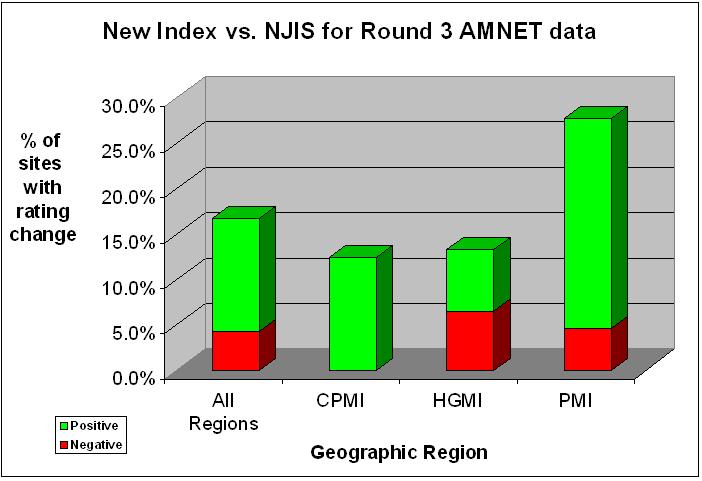|
|
|
Bureau of Freshwater & Biological Monitoring
| |
|
|
|
New Index vs. NJIS
Historically, the New Jersey Impairment Score (NJIS), based on family level taxonomy, was used for the entire state to make assessments at three levels of impairment; non-impaired, moderately impaired, and severely impaired. New indices were developed, based on genus level taxonomy and grouped into three distinct geographical regions: high gradient (above the Fall Line), low gradient (Coastal Plain excluding the Pinelands), and Pinelands (the boundary of the Pinelands National Reserve plus a 5-km buffer). These new indices are called High Gradient Macroinvertebrate Index (HGMI), Coastal Plain Macroinvertebrate Index (CPMI), and the Pinelands Macroinvertebrate Index (PMI). These new indices replace the NJIS and offer a greater level of resolution using four levels of assessment; excellent, good, fair, and poor. A complete discussion of the new indices can be found in Appendix B of the AMNET SOP.
The following graph shows the change in assessments from the NJIS to the new indices. A significant change is defined as an NJIS rating of severe or moderate improving to a new index rating of good or excellent or; an NJIS rating of non-impaired declining to a new index rating of fair or poor.
The majority of significant changes occur in the Pinelands with the changes being predominantly positive.

Click here to see Round 3 Data Summary
|
|
| |
|